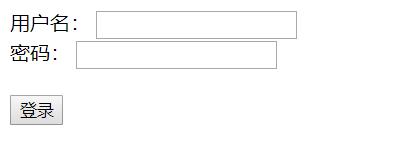项目示例地址: https://github.com/ccyinghua/webpack-multipage
项目运行:
下载项目之后 # 下载依赖 npm install # 运行 npm run dev http://localhost:3000/login.html http://localhost:3000/index.html
一、开发环境
node v6.11.0
二、安装vue-cli脚手架
npm install vue-cli@2.8.2 -g
三、初始化项目
vue init webpack webpack-multipage // 创建项目 cd webpack-multipage // 进入webpack-multipage目录 npm install // 下载依赖 npm run dev // 运行

http://localhost:8080

四、修改配置支持多页面
将项目根目录index.html,src下的文件删除,重新调整的src结构目录:
|-- src |-- assets |-- components |-- entry |-- index // index模块 |-- components |-- Hello.vue |-- router |-- index.js |-- index.html |-- index.js |-- index.vue |-- login // login模块 |-- login.html |-- login.js |-- login.vue
(1) 修改build/util.js,在文件最后添加
# 先下载glob组件
npm install glob -D
将目录映射成配置。如./src/entry/login/login.js变成映射{login: './src/entry/login/login.js'}
var glob = require('glob'); exports.getEntries = function (globPath) { var entries = {} glob.sync(globPath).forEach(function (entry) { var basename = path.basename(entry, path.extname(entry), 'router.js'); entries[basename] = entry }); return entries; }
(2) 修改build/webpack.base.conf.js,找到entry属性,使用了uitls.js文件中新添加的方法getEntries,将entry中的js都映射成程序的入口
module.exports = { entry: utils.getEntries('./src/entry/*/*.js'), ... }
(3) 修改build/webpack.dev.conf.js
删除文件内原有的HtmlWebpackPlugin相关内容
... // https://github.com/ampedandwired/html-webpack-plugin new HtmlWebpackPlugin({ filename: 'index.html', template: 'index.html', inject: true }), ...
在文件最后添加
var pages = utils.getEntries('./src/entry/*/*.html') for(var page in pages) { // 配置生成的html文件,定义路径等 var conf = { filename: page + '.html', template: pages[page], //模板路径 inject: true, // excludeChunks 允许跳过某些chunks, 而chunks告诉插件要引用entry里面的哪几个入口 // 如何更好的理解这块呢?举个例子:比如本demo中包含两个模块(index和about),最好的当然是各个模块引入自己所需的js, // 而不是每个页面都引入所有的js,你可以把下面这个excludeChunks去掉,然后npm run build,然后看编译出来的index.html和about.html就知道了 // filter:将数据过滤,然后返回符合要求的数据,Object.keys是获取JSON对象中的每个key excludeChunks: Object.keys(pages).filter(item => { return (item != page) }) } // 需要生成几个html文件,就配置几个HtmlWebpackPlugin对象 devWebpackConfig.plugins.push(new HtmlWebpackPlugin(conf)) }
(4) 修改build/webpack.prod.conf.js
删除文件内原有的HtmlWebpackPlugin相关内容
... // generate dist index.html with correct asset hash for caching. // you can customize output by editing /index.html // see https://github.com/ampedandwired/html-webpack-plugin new HtmlWebpackPlugin({ filename: config.build.index, template: 'index.html', inject: true, minify: { removeComments: true, collapseWhitespace: true, removeAttributeQuotes: true // more options: // https://github.com/kangax/html-minifier#options-quick-reference }, // necessary to consistently work with multiple chunks via CommonsChunkPlugin chunksSortMode: 'dependency' }), ...
在文件最后添加
var pages = utils.getEntries('./src/entry/*/*.html') for(var page in pages) { // 配置生成的html文件,定义路径等 var conf = { filename: page + '.html', template: pages[page], //模板路径 inject: true, // excludeChunks 允许跳过某些chunks, 而chunks告诉插件要引用entry里面的哪几个入口 // 如何更好的理解这块呢?举个例子:比如本demo中包含两个模块(index和about),最好的当然是各个模块引入自己所需的js, // 而不是每个页面都引入所有的js,你可以把下面这个excludeChunks去掉,然后npm run build,然后看编译出来的index.html和about.html就知道了 // filter:将数据过滤,然后返回符合要求的数据,Object.keys是获取JSON对象中的每个key excludeChunks: Object.keys(pages).filter(item => { return (item != page) }), minify: { removeComments: true, collapseWhitespace: true, removeAttributeQuotes: true // more options: // https://github.com/kangax/html-minifier#options-quick-reference }, // necessary to consistently work with multiple chunks via CommonsChunkPlugin chunksSortMode: 'dependency' } // 需要生成几个html文件,就配置几个HtmlWebpackPlugin对象 module.exports.plugins.push(new HtmlWebpackPlugin(conf)) }
(5)修改config/index.js
'use strict' // Template version: 1.3.1 // see http://vuejs-templates.github.io/webpack for documentation. const path = require('path') module.exports = { dev: { env: require('./dev.env'), // 引入当前目录下的dev.env.js,用来指明开发环境 port: 3000, // dev-server的端口号,可以自行更改 autoOpenBrowser: true, // 是否自定代开浏览器 // Paths assetsSubDirectory: 'static', assetsPublicPath: '/', // 下面是代理表,作用是用来,建一个虚拟api服务器用来代理本机的请求,只能用于开发模式 proxyTable: { "/demo/api":"http://localhost:8080" }, // Various Dev Server settings host: 'localhost', // can be overwritten by process.env.HOST autoOpenBrowser: false, errorOverlay: true, notifyOnErrors: true, poll: false, // https://webpack.js.org/configuration/dev-server/#devserver-watchoptions- /** * Source Maps */ // https://webpack.js.org/configuration/devtool/#development devtool: 'cheap-module-eval-source-map', // If you have problems debugging vue-files in devtools, // set this to false - it *may* help // https://vue-loader.vuejs.org/en/options.html#cachebusting cacheBusting: true, // CSS Sourcemaps off by default because relative paths are "buggy" // with this option, according to the CSS-Loader README // (https://github.com/webpack/css-loader#sourcemaps) // In our experience, they generally work as expected, // just be aware of this issue when enabling this option. // 是否生成css,map文件,上面这段英文就是说使用这个cssmap可能存在问题,但是按照经验,问题不大,可以使用 cssSourceMap: false }, build: { env: require('./prod.env'), // 导入prod.env.js配置文件,只要用来指定当前环境 // Template for index.html index: path.resolve(__dirname, '../dist/index.html'), // 相对路径的拼接 // Paths assetsRoot: path.resolve(__dirname, '../dist'), // 静态资源的根目录 也就是dist目录 assetsSubDirectory: 'static', // 静态资源根目录的子目录static,也就是dist目录下面的static assetsPublicPath: '/', // 静态资源的公开路径,也就是真正的引用路径 /** * Source Maps */ productionSourceMap: true, // 改成false运行时不会出现map调试文件。;是否生成生产环境的sourcmap,sourcmap是用来debug编译后文件的,通过映射到编译前文件来实现 // https://webpack.js.org/configuration/devtool/#production devtool: '#source-map', // Gzip off by default as many popular static hosts such as // Surge or Netlify already gzip all static assets for you. // Before setting to `true`, make sure to: // npm install --save-dev compression-webpack-plugin productionGzip: false, // 是否在生产环境中压缩代码,如果要压缩必须安装compression-webpack-plugin productionGzipExtensions: ['js', 'css'], // 定义要压缩哪些类型的文件 // Run the build command with an extra argument to // View the bundle analyzer report after build finishes: // `npm run build --report` // Set to `true` or `false` to always turn it on or off // 下面是用来开启编译完成后的报告,可以通过设置值为true和false来开启或关闭 // 下面的process.env.npm_config_report表示定义的一个npm_config_report环境变量,可以自行设置 bundleAnalyzerReport: process.env.npm_config_report } }
assetsRoot:执行npm run build之后,项目生成的文件放到哪个目录中。vue生成的文件都是静态文件,可以放在nginx中,也可以放到Spring Boot项目的resources/static目录中。 assetsPublicPath:项目的根路径。注意,这个属性在build、dev两个环境都有,修改时,应该同时修改两处。 port:这里改成3000,这个是在开发时,webpack-dev-server运行的端口。 proxyTable:这个属性用于将请求转发到指定地址去。这里的配置意思是将所有以/demo/api开头的请求,都转发到http://localhost:8080地址。
五、建立页面
index/index.html
<!DOCTYPE html> <html> <head> <meta charset="utf-8"> <title>index</title> </head> <body> <div id="app"></div> </body> </html>
index/index.js
import Vue from 'vue' import IndexView from './index.vue' import router from './router' // import VueResource from 'vue-resource'; // 使用前先npm install vue-resource --save下载vue-resource // Vue.use(VueResource); new Vue({ el: '#app', router, render: h => h(IndexView) });
index/index.vue
<template> <div> <router-view></router-view> </div> </template> <script> export default { } </script> <style> </style>
index/router/index.js
import Vue from 'vue' import Router from 'vue-router' import Hello from '../components/Hello.vue' Vue.use(Router); export default new Router({ routes: [ { path: '/', name: 'Hello', component: Hello } ] })
index/components/Hello.vue
<template> <div> Hello {{ name }} </div> </template> <script> export default { data(){ return { name: "admin" } }, mounted(){ //this.$http.get("/demo/api/userinfo").then(resp =>{ // this.name = resp.data.data; //}); } } </script> <style> </style>
login/login.html
<!DOCTYPE html> <html> <head> <meta charset="utf-8"> <title>login</title> </head> <body> <div id="app"></div> </body> </html>
login/login.js
import Vue from 'vue' import LoginView from './login.vue' // import VueResource from 'vue-resource'; // Vue.use(VueResource); new Vue({ el: '#app', render: h => h(LoginView) })
login/login.vue
<template> <div> <form id="login-form"> <label for="username">用户名:</label> <input type="text" id="username" name="username"> <br> <label for="password">密码:</label> <input type="password" id="password" name="password"><br> <br> <button @click.prevent="submit">登录</button> </form> </div> </template> <script> export default { methods:{ submit(){ window.location = "/demo/index.html"; //let formData = new FormData(document.getElementById("login-form")); //this.$http.post("/demo/api/login", formData).then(resp => { // if (resp.data.status === 200){ // window.location = "/index.html"; // }else { // alert(resp.data.desc); // } //}) } } } </script> <style> </style>
六、运行
http://localhost:3000/login.html

http://localhost:3000/index.html
